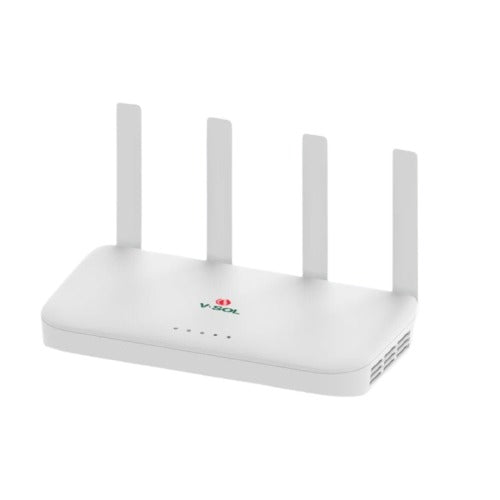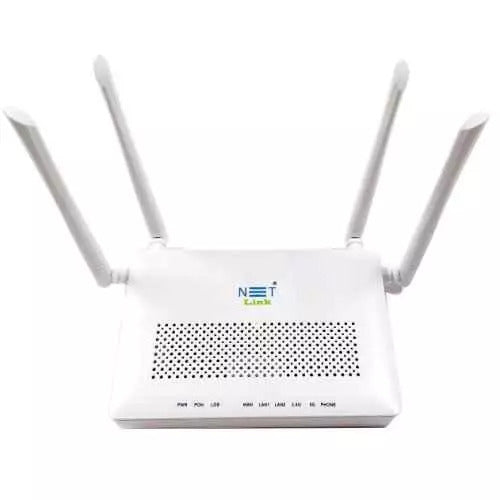
Wi-Fi 6 vs. Wi-Fi 6E - Unveiling the next level of wireless connectivity
With the constant progression of technology, the Wi-Fi standard also undergoes continuous development. The latest advancements in this domain include Wi-Fi 6 and its subsequent iteration, Wi-Fi 6E. Before delving into Wi-Fi 6E, it takes a moment to grasp its precursor, Wi-Fi 6. It is also known as 802.11ax represents the latest generation of technology. It expands on the groundwork laid by its forerunner, Wi-Fi 5 (802.11ac), and brings significant enhancements. The benefits are its enhanced speed and capacity. With support for wider channels and higher data rates, Wi-Fi 6 delivers more efficient wireless connections, even in crowded environments with numerous devices. It is an excellent choice for homes, offices, and public spaces containing many devices vying for bandwidth.
Now, let us introduce Wi-Fi 6E, the subsequent progressive advancement in wireless connectivity. The "E" in Wi-Fi 6E signifies "Extended," highlighting the broadening of the spectrum accessible for Wi-Fi devices. While functioning within the 2.4 GHz and 5 GHz frequency ranges, Wi-Fi 6E introduces compatibility with the 6 GHz spectrum. The 6 GHz bands in Wi-Fi 6E bring several advantages and provide substantial additional spectrum. It translates to less congestion and interference. With more available channels, devices can communicate with less contention, resulting in better performance. The 6 GHz band offers broader bandwidth channels, ideal for even higher data rates. It means that Wi-Fi 6E has faster performance than Wi-Fi 6. Making it an enticing prospect for bandwidth-intensive activities like streaming high-definition content or online gaming.
Difference between Wi-Fi 6 and Wi-Fi 6E
|
Aspects |
Wi-Fi 6 |
Wi-Fi 6E |
|
Spectrum availability |
2.4 GHz and 5 GHz bands |
2.4 GHz, 5 GHz, and 6 GHz bands |
|
Channel width |
Up to 160 MHz |
Up to 160 MHz (with wider options) |
|
Interference and congestion handling |
Improved interference and congestion handling in the 5 GHz band due to advanced technologies |
Significantly reduced interference and congestion in the 6 GHz bands, leading to better performance and reliability |
|
Available spectrum |
Limited spectrum availability in the 5 GHz bands, which can lead to congestion and interference |
Access to a largely untapped spectrum in the 6 GHz band, providing more available channels for higher performance |
|
Data rates |
Offers faster data rates compared to previous Wi-Fi standards |
Achieve even higher data rates due to the availability of wider channels and reduced interference |
|
Compatibility with previous versions |
Supporting both Wi-Fi 5 (802.11ac) and previous generations of standards. |
|
|
Use cases |
Suitable for a wide range of devices and applications, providing enhanced performance and capacity |
Particularly beneficial for bandwidth-intensive applications, such as AR/VR, 4K/8K video streaming, and IoT devices |
|
Device support |
Wi-Fi 6-enabled devices are widely available in the market |
Wi-Fi 6E support is gradually becoming available in newer devices, with broader adoption expected in the future |
|
Network efficiency |
Implements advanced technologies like Target Wake Time (TWT) for improved power efficiency |
Continues to build upon the network efficiency improvements of Wi-Fi 6, leading to better power management and resource allocation |
|
Interference mitigation |
Relies on technologies like Orthogonal Frequency Division Multiple Access (OFDMA) and Multi-User MIMO (MU-MIMO) to mitigate interference |
Benefits from the use of wider channels and access to the less crowded 6 GHz band, resulting in reduced interference and better performance |
|
Future-proofing |
Provides a significant improvement over previous Wi-Fi standards |
Offers the latest advancements in wireless technology and future-proof networks for upcoming devices and applications |
Is Wi-Fi 6E the future of wireless connectivity?
With the advent of Wi-Fi 6E, it is beyond doubt that it signifies a substantial leap in wireless connectivity. The expanded spectrum availability, higher data rates, and reduced congestion make it an enticing prospect for those seeking the possible Wi-Fi experience. As of when I composed this article, Wi-Fi 6E remains relatively fresh, and compatible devices are progressively entering the market. Although certain smartphones, laptops, and routers are beginning to embrace Wi-Fi 6E, it might require some time before it becomes the general norm for all devices. The availability of routers and access points that support the 6 GHz bands may vary depending on your geographical location and regulatory approvals. As the technology develops and gains wide acceptance, Wi-Fi 6E may become the ultimate wireless connection. Its numerous advantages, including enhanced bandwidth, swifter speeds, and network performance, render it ideally suited for the escalating requirements of contemporary applications and devices.
- With the 6 GHz band, Wi-Fi 6E opens up a vast amount of untapped spectrum for channels for devices to operate on. It allows for smoother, more reliable connections and enhanced overall performance.
- With Wi-Fi 6E, users expect faster download and upload speeds, reduced latency, and a more responsive online experience.
- Moreover, the backward compatibility of Wi-Fi 6E guarantees that devices that uphold Wi-Fi 6E can maintain communication with preceding Wi-Fi standards such as Wi-Fi 6 and Wi-Fi 5. Its seamless transition ensures that users with a combination of devices in their network fully leverage the advantages offered by Wi-Fi 6E without necessitating the replacement of all their current devices.
Is Wi-Fi 6E expensive?
The cost of Wi-Fi 6E devices, such as routers, access points, and client devices, may initially compare to Wi-Fi 6 or older standards. It refers to the relative newness of the technology and the need for specialized hardware to support the expanded spectrum in the 6 GHz bands. Nonetheless, as the technology evolves and gains broader acceptance, it is anticipated that the costs will progressively diminish, thereby enabling Wi-Fi 6E to be within reach for a more extensive array of users. Consider the example of a consumer looking to upgrade their home network to Wi-Fi 6E. They find that Wi-Fi 6E routers are priced higher than Wi-Fi 5 (802.11ac) or Wi-Fi 6 (802.11ax) routers. They also notice that the Wi-Fi 6E router offers superior performance, higher speeds, and less interference due to the new 6 GHz band. Considering the long-term benefits and expected cost reductions as the technology matures, the consumer decides that the investment in Wi-Fi 6E is worth it for their specific needs.
Is Wi-Fi 6E the fastest?
Wi-Fi 6E has the potential to deliver incredible speeds. With wider channels accessible, devices achieve higher data rates, leading to faster and more efficient wireless connections. Nevertheless, it is crucial to acknowledge that the specific velocity encountered will be contingent upon diverse elements, encompassing the capabilities of devices, the configuration of the network, and the prevailing network circumstances. It has the potential for exceptional speed and considers other factors like signal strength, distance from the router, and interference.
- Wi-Fi 6E has the potential to increase speed compared to previous Wi-Fi standards. By leveraging the expanded spectrum in the 6 GHz bands, 6E devices access wider channels and achieve higher data rates. This increased bandwidth allows for faster transmission of data. To fully benefit from the speed benefits of Wi-Fi 6E, both the router and the device client must support it.
- Wi-Fi 6E has the potential to deliver fast speeds comparable to Ethernet connections. With larger channels and higher data rates enabled by the expanded spectrum in the 6 GHz bands, it offers impressive performance.
Does Wi-Fi 6E include bluetooth?
No, Wi-Fi 6E and Bluetooth are two different wireless technologies. Wi-Fi 6E focuses on delivering high-performance wireless connectivity within local networks, while Bluetooth enables short-range wireless communication between devices for purposes such as audio streaming, file transfer, and device pairing. While some devices may support both, they are independent of each other and serve different functions. Understand the specific capabilities of your devices and choose the appropriate technology for the desired application. It's important to note that Wi-Fi 6E and Bluetooth coexist and are used simultaneously on devices that support both technologies. They are not integrated or combined into a single standard. Users enjoy the benefits of using 6E and Bluetooth on devices with the necessary hardware and software capabilities. It focuses on providing faster speeds, increased capacity, and reduced interference in the 6 GHz band, while Bluetooth excels in short-range wireless communication for devices such as headphones, speakers, and peripherals. The coexistence of these technologies offers users the flexibility to leverage the strengths of each for different use cases and devices.
Is Wi-Fi 6E good for gaming?
Wi-Fi 6E brings several advancements that make it particularly well-suited for gaming applications. Whether you engage in competitive online gaming or stream high-definition media, offers the capability to meet the requirements of contemporary gaming, ensuring optimal performance. We imagine a gaming enthusiast participating in competitive online tournaments. With the experience a significant improvement in their gaming performance. The faster speeds allow for quick downloads of game updates, while the reduced latency ensures minimal delays in their actions during gameplay. The increased capacity enables seamless online gaming even in environments with multiple connected devices. The gaming experience is smoother, more responsive, and less prone to lag. Playing casual gaming or competitive electronic sports provides a solid foundation for a seamless and immersive gaming experience.
Conclusion
Although Wi-Fi 6E is still in its initial acceptance stage, its capacity to transform wireless connectivity is apparent. As additional devices become compatible and the technology becomes pervasive, will mold the future of wireless connectivity, offering users swifter, and uninterrupted wireless experiences. The choice between Wi-Fi 6 and Wi-Fi 6E depends on your needs. As the market evolves and more devices become Wi-Fi 6E compatible, the benefits of this new standard will become more accessible to an audience. Therefore, remain vigilant regarding the constantly evolving realm of wireless connectivity, and select the alternative that most aptly caters to your future requirements.



















